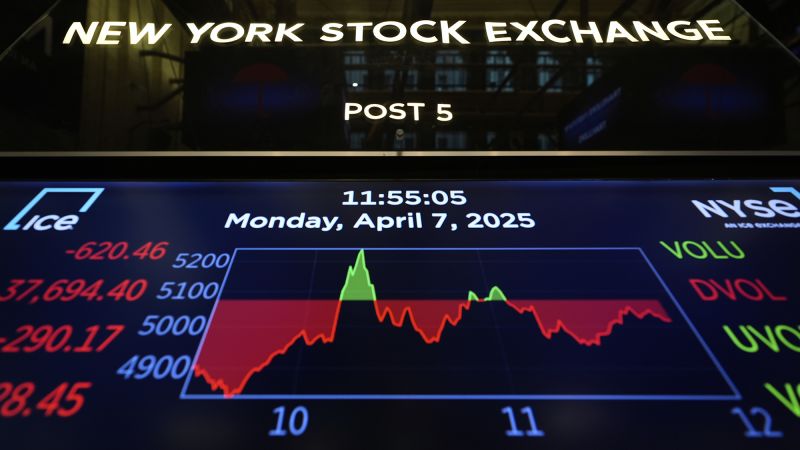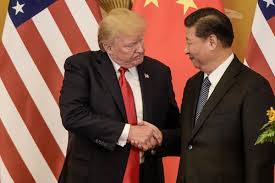The morning of Monday, the stock market displayed some rather erratic behavior. What seemed like a brief moment of respite from the ongoing tariff drama turned out to be nothing but a market-induced mirage. Rumors of President Trump possibly pausing tariffs for 90 days sent stocks soaring briefly before the administration refuted any such intentions, leading to a rapid decline in stock prices.
Market analysts and observers were desperately hoping for some external intervention to alleviate the tariff-related turmoil. The expectation was that either Congress, business leaders, the Federal Reserve, or the White House would step in to bring some relief. However, as events unfolded, it became apparent that the market was trying to engineer a solution of its own, albeit a fictional one. This episode shed light on the underlying sentiment within the market, emphasizing the longing for a break from the ongoing trade uncertainties.
Many on Wall Street, caught off guard by the seriousness of Trump's tariff stance, are now recognizing that the only plausible way out of the current volatility is a significant shift in US tariff and trade policies. The consensus is that stabilizing equity prices hinges on a tangible alteration in the prevailing tariff landscape. Until there is a clear indication that worst-case scenarios like recent tariff announcements are off the table, market volatility or downward trends may persist.
Investors are well aware of the unpredictability surrounding economic forecasts, especially during these uncertain times. The present moment is characterized by a high degree of uncertainty, making it challenging to forecast future outcomes accurately. With multiple variables at play, making bold predictions concerning rate cuts or trade tensions should be approached with caution. Market strategists like DataTrek's Nicholas Colas underscore the need for careful consideration and contingency planning given the current unpredictable environment.
The recent market upheaval caused by a false report posted on X highlights the platform's significant influence and the pitfalls of misinformation propagation. A seemingly innocuous interview snippet regarding a potential tariff pause morphed into a fabricated headline, triggering a multitrillion-dollar swing in stock prices. The incident underscores the vulnerability of financial markets to the dissemination of inaccurate information, particularly through social media platforms like X.
The episode serves as a cautionary tale about the perils of unreliable reporting in an age where information travels instantaneously. The market's sensitivity to unverified news underscores the importance of fact-checking and responsible reporting. While corrections were made swiftly after the misinformation circulated, the financial ramifications were substantial, emphasizing the need for accurate and trustworthy reporting in today’s fast-paced information landscape.
In conclusion, the recent market frenzy triggered by a false report underscores the challenges posed by misinformation in the digital age. It highlights the imperative for investors to exercise caution and discernment when processing news and information, especially on platforms prone to rapid dissemination of unverified content. This incident serves as a reminder of the critical role accurate reporting plays in preserving market stability and investor confidence.



